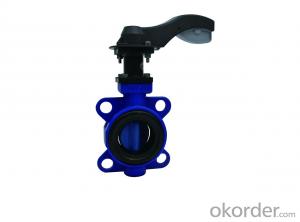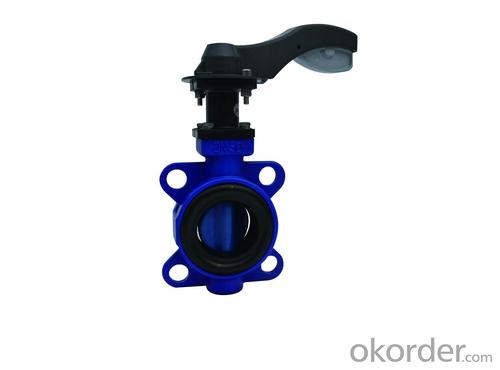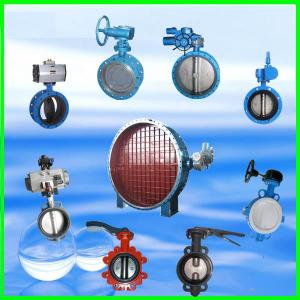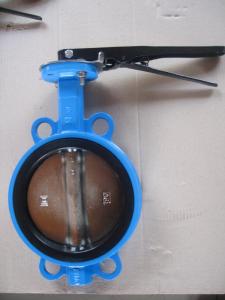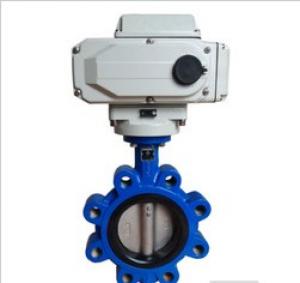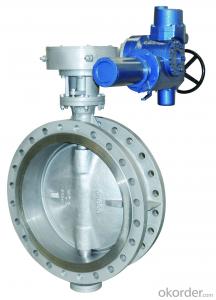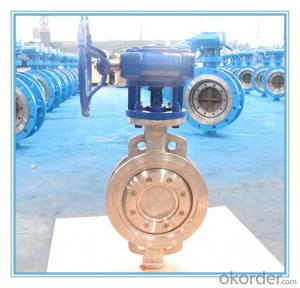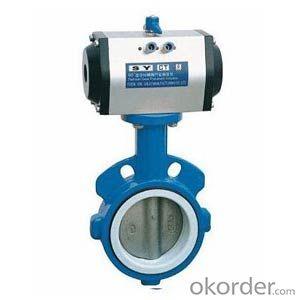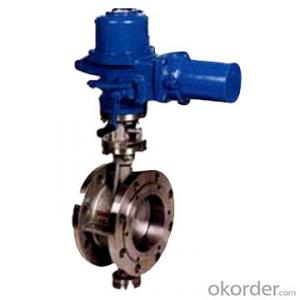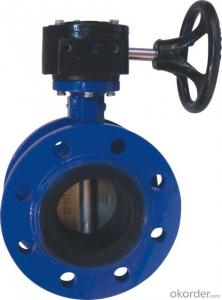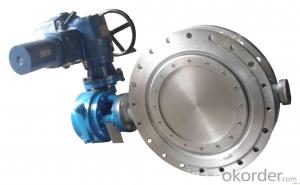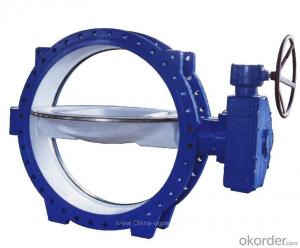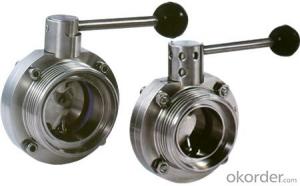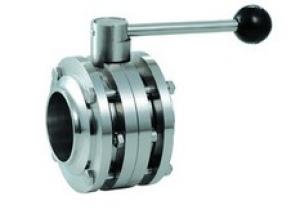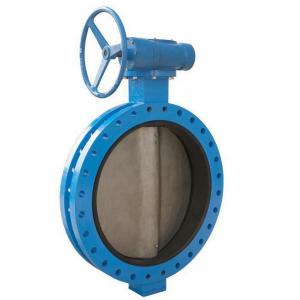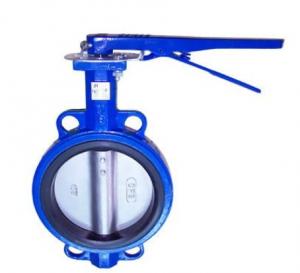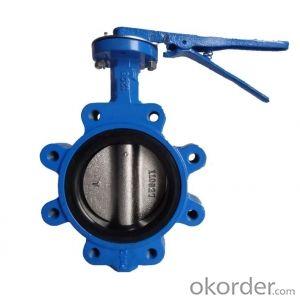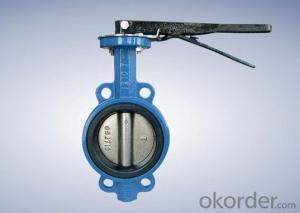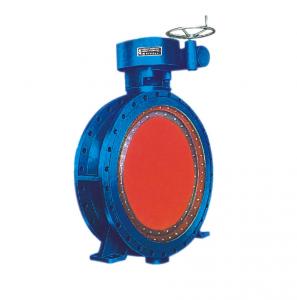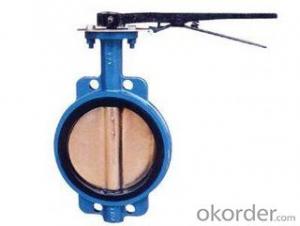Butterfly Valve High Quality Steel Wafer Marine Stainless
- Loading Port:
- China main port
- Payment Terms:
- TT OR LC
- Min Order Qty:
- 1000 pc
- Supply Capability:
- 10000 pc/month
OKorder Service Pledge
OKorder Financial Service
You Might Also Like
1. Manual Wafer Butterfly Valve Description:
A butterfly valve is a valve which can be used for isolating or regulating flow. The closing mechanism takes the form of a disk. Operation is similar to that of a ball valve, which allows for quick shut off. Butterfly valves are generally favored because they are lower in cost to other valve designs as well as being lighter in weight, meaning less support is required.
Butterfly valve is mainly consisted of body, stem, disc, seat and driver lever, gearbox, pneumatic and electric Actuator) and so on.
1.Applicable medium: Crude oil, finished oil, Steam, Acidiferous and alkalinous fluid.
2.We welcome sample orders for as few as 1 set.
3.CCS, DNV, ABS and NK certificates approved
4. High quality and competitive prices
2.Main Features of the Manual Wafer Butterfly Valve
a)Cast hole. Flange connection meet ANSI 125/150# DIN PN10/16 BS4504 PN10/16 in the meanwhile.
b)Soft seat. Replaceable. Increase of service life.
c) Square and short neck. Easy to stick scutcheon and cost saving
d)Double half shaft without pin.
DIN3352 F4 resilient seat flange gate valves
1.size:DN40-DN300
2.medium:water
3.standard:DIN
4.certificate:ISO9001 CE
resilient gate valves
1.size:DN40-DN300
2.medium:water
3.certificate:ISO9001 CE
4.standard:DIN
available medium:water
working temperature:≤80oC
flange dimensions:DIN2501
face to face dimensions:DIN3202F4.
3. Manual Wafer Butterfly Valve Images:
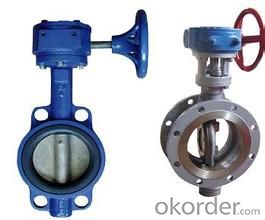
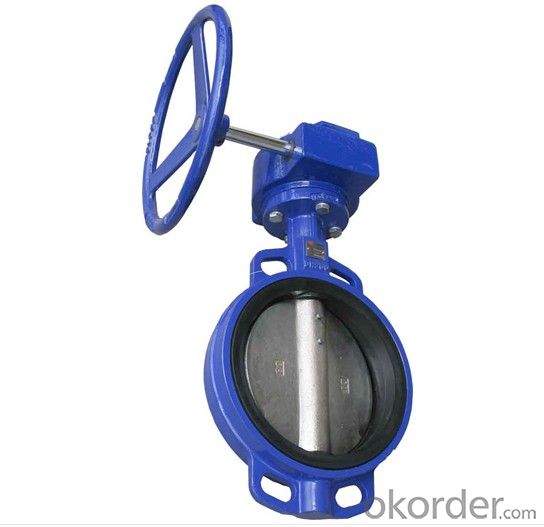
4.Manual Wafer Butterfly Valve Specification:
Quick DetailsStandard or Nonstandard: Standard Structure: Gate Pressure: Medium Pressure
Power: Manual Material: Casting Temperature of Media: Medium Temperature
Media: Water Port Size: DN40mm-DN300 Place of Origin: China (Mainland)
Model Number: CMAX-GF4 resilient gate valves: resilient seat flange
Packaging & DeliveryPackaging Detail: air plastic bag inside/wooden box outside
Delivery Detail: 15-60days
5.FAQ
1. What is manual wafer butterfly valve?
A: Wafer style is the more common of the two and is less expensive than the lug style. The wafer style butterfly valve is just about the standard. It ís so common that no one even bothers to use the word "wafer" when ordering a butterfly valve. It is taken for granted that if a butterfly valve is ordered, a wafer style will be received.
2. How about the Installation of the Wafer Style Butterfly Valve?
A: Butterfly valves are installed by inserting the valve between two flanges using bolts or studs and nuts to hold it all together. This type of installation, of course, makes it impossible to disconnect just one side of the piping system from the valve. That benefit is received using the lug style valve.
3. What is the working principle of manual wafer butterfly valve?
A: A butterfly valve is from a family of valves called quarter-turn valves. In operation, the valve is fully open or closed when the disc is rotated a quarter turn. The "butterfly" is a metal disc mounted on a rod. When the valve is closed, the disc is turned so that it completely blocks off the passageway. When the valve is fully open, the disc is rotated a quarter turn so that it allows an almost unrestricted passage of the fluid. The valve may also be opened incrementally to throttle flow.
- Q: Butterfly valve D41W-1, 41, W, 1, respectively, what does that mean?
- This butterfly valve in our factory called butterfly, 4 represents the connection of the flange connection flange is French, 41 in 1 on behalf of butterfly valve, W represents the body seal, is C that is actually the correct type of cast steel, should be D41W-1C. Suitable for ventilation, smoke, and these media.
- Q: Electric butterfly valve (not take the lead) what do you mean?
- Electric butterfly valve, as its name implies, consists of an electric actuator and butterfly valve, and the customer does not take the lead, that is, without the electric actuator, only the butterfly valve can be provided.
- Q: How many kinds of butterfly valves are there?
- What's the score?There are central butterfly valve, double eccentric butterfly valve, three eccentric butterfly valveAnd according to the materialAnd according to the way of connection
- Q: Are fire fighting signal valves and signal butterfly valves the same thing?
- The same nature: both can open and close, there is also information back fed.Signal valves are collectively referred to as signal butterfly valves.
- Q: Butterfly valve D71X-10 and butterfly D371X-10 what is the difference?
- One is the turbine drive and the other is with the handle
- Q: For example, the arrow above is from left to right, and the direction of my current is from right to left. Is that ok? I have a diameter of 700 of the hard seal butterfly valve is so installed, but it will leak water, it will not leak, very serious
- The direction of the arrow on the valve body is cast, refers to the flow of media, users see the arrow, the arrow direction according to the logical and installation, this installation has become a habit, it is easy to accept the installation instructions, according to the national standard is not what error. But in the eccentric butterfly valve is installed so that sometimes there will be some problems, said the following example: according to the flow of eccentric butterfly valve with the medium flow consistent installation, tube medium is liquid, after the valve is closed, if the original direction of medium inlet pressure, reduced or zero, the export of medium reflux reflux, if senior supply, resulting in the high pressure medium, the pressure is greater than the inlet pressure, the valve will be subjected to reverse pressure, because the hard seal butterfly valve as a one-way valve so that the use is not conducive to sealing butterfly valve, and there will be leakage.
- Q: Who can give me a download UG butterfly valve, needle valve, diaphragm valve standard model address, Japanese standard, American Standard.
- Support many 3D CAD format, such as the commonly used UG, Pro/E, SolidWorks......As for the butterfly you said, don't post the link up, the standard JIS, American Standard ANSI, German standard DIN are.You use Baidu Search "LinkAble PARTcommunity", after the open registration, CAD format, such as UG, ASAHI and then to find the manufacturer home page, which is the valve, you said the Japanese standard, German standard, American Standard valve basically all.
- Q: Butterfly valve D71X-1.6C, DN50, there is no difference between C and no C? What do you mean by "concrete"?
- The C indicates that the material is carbon steel and does not indicate cast iron (generally omitted)
- Q: Who was the first doctor to discover Pulmonary Valve Stenosis? Also, who was the first doctor to perform surgery for it? Please and thank you for your help.P.S. I have this condition.
- 1761 - Pulmonary valvar or valvular stenosis is one of the more common forms of congenital heart malformations and it has been extensively studied since the original description of pulmonary valve stenosis by John Baptist Morgagni in 1761. 1888 - Tetralogy of Fallot, first characterized by Dr.Etienne Fallot in 1888, is present in about 3000 children born each year in the United States. It is a combination of four heart abnormalities. Dodrill and his colleagues employed it with success for the open correction of a stenotic pulmonary valve in October 1952.
- Q: Buried extension butterfly valve is buried or need to repair the valve well, can build the valve well, the extension rod butterfly valve installed in the valve well, the extension rod to avoid covers, the top of the valve well out, so that the hand wheel in the ground operation.Atlas S143 is less than the inner diameter of DN150 valve wells only 1200mm, DN200-DN250D diameter of only 1400mm, 700mm valve covers, valve rod and a handwheel to lengthen through the valve cover, valve wells is built to cover the embedded pipe or tube? Is there a standard atlas?
- The establishment of a repair valve well, easy to repair, usually hydrogen long rod butterfly valve installed in the well. But if the quality of buying long stem butterfly valve, it can also be buried directly, not easy to bad
Send your message to us
Butterfly Valve High Quality Steel Wafer Marine Stainless
- Loading Port:
- China main port
- Payment Terms:
- TT OR LC
- Min Order Qty:
- 1000 pc
- Supply Capability:
- 10000 pc/month
OKorder Service Pledge
OKorder Financial Service
Similar products
Hot products
Hot Searches
Related keywords
